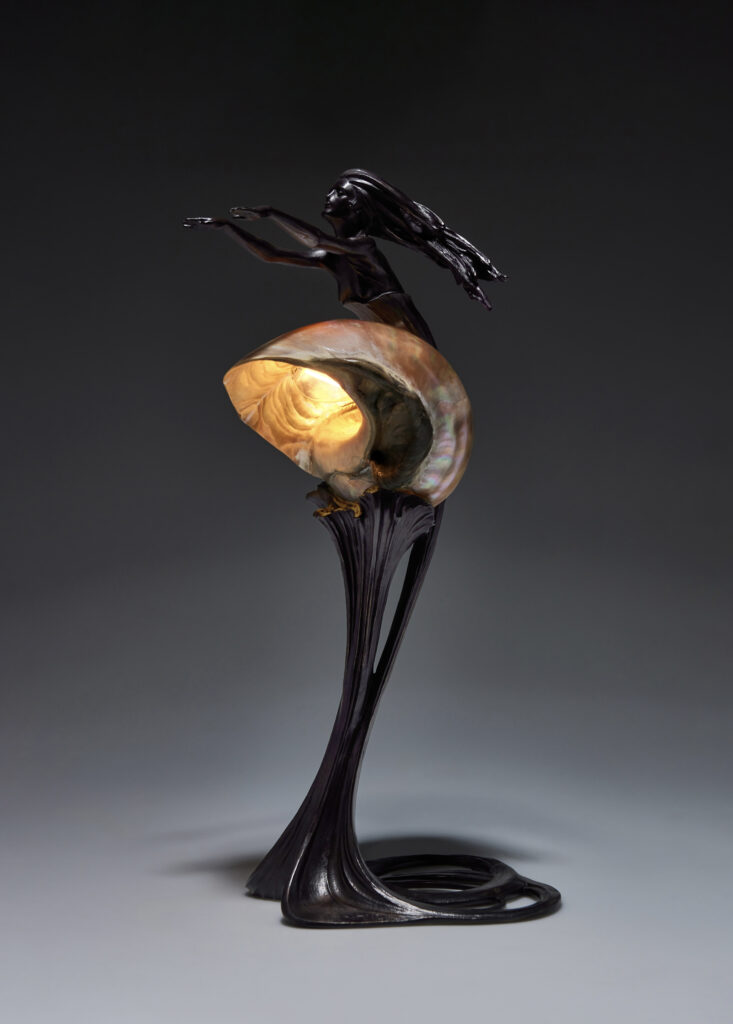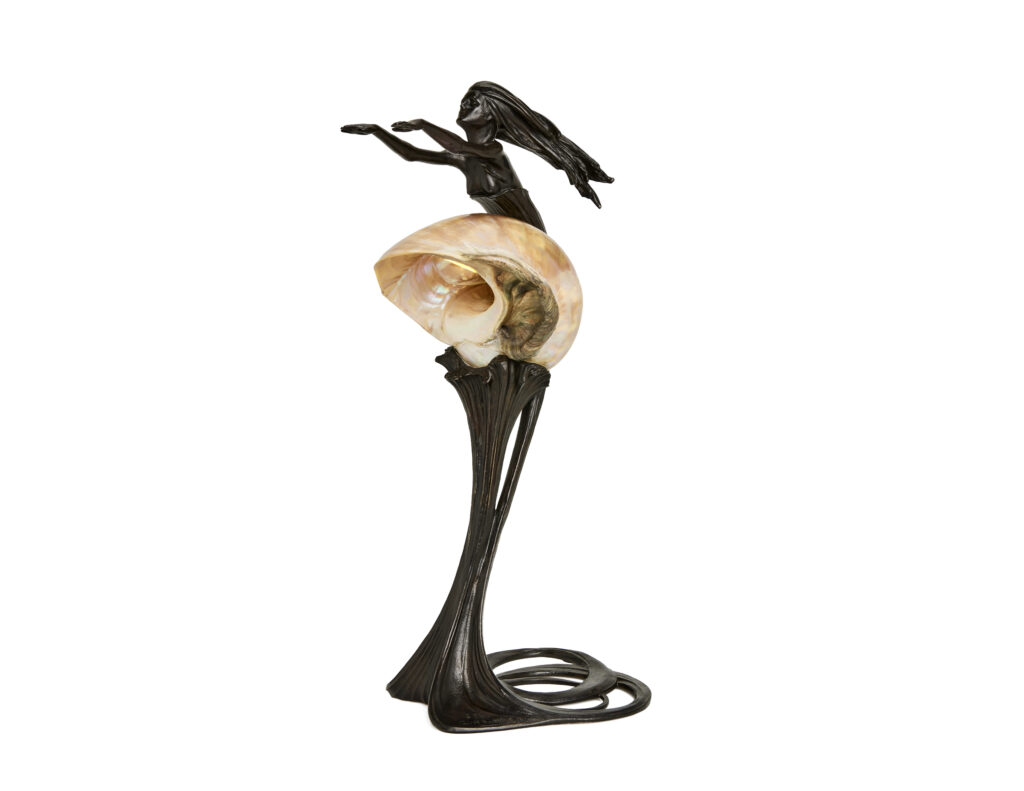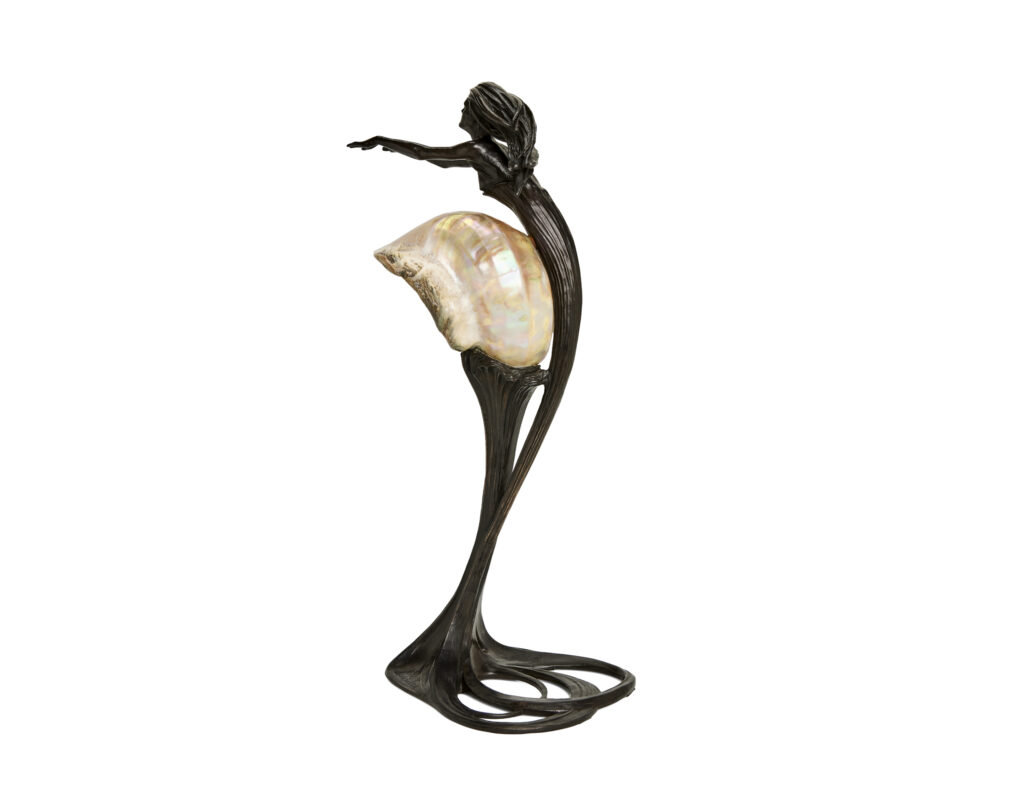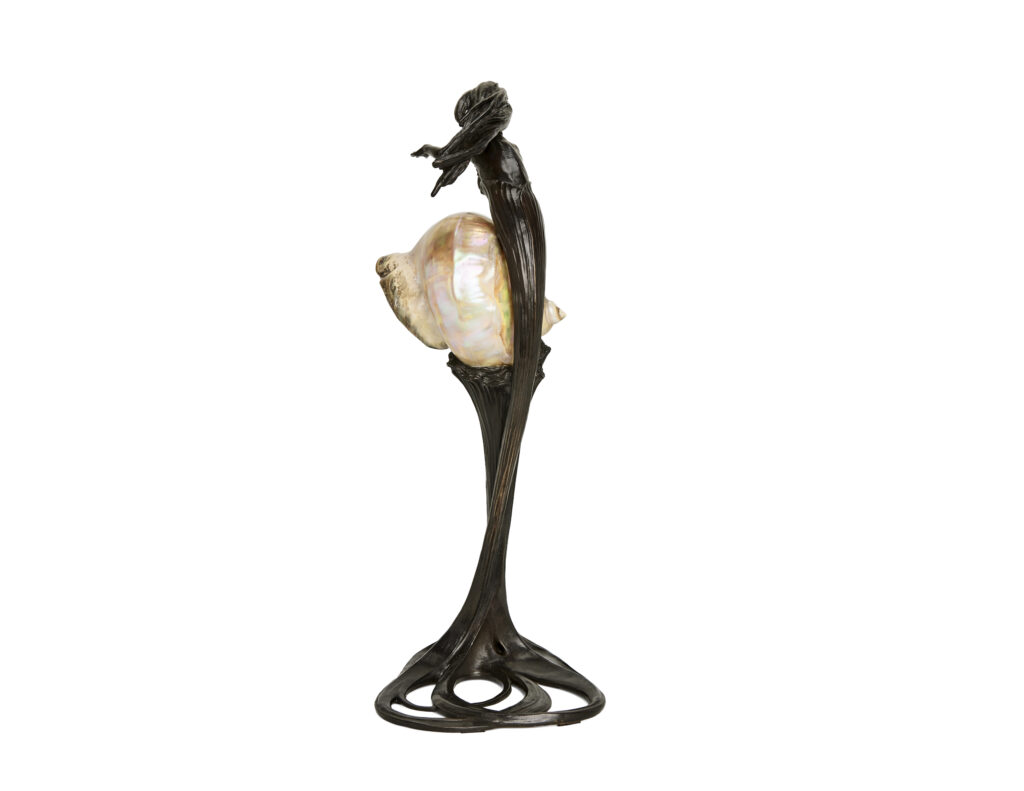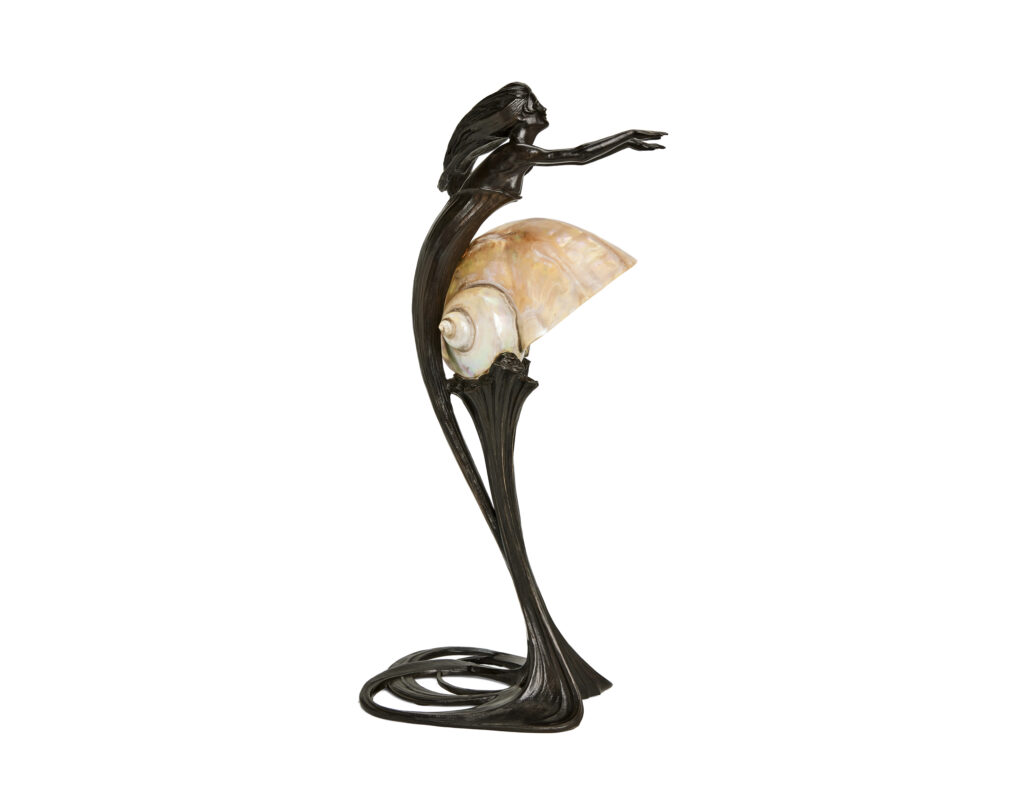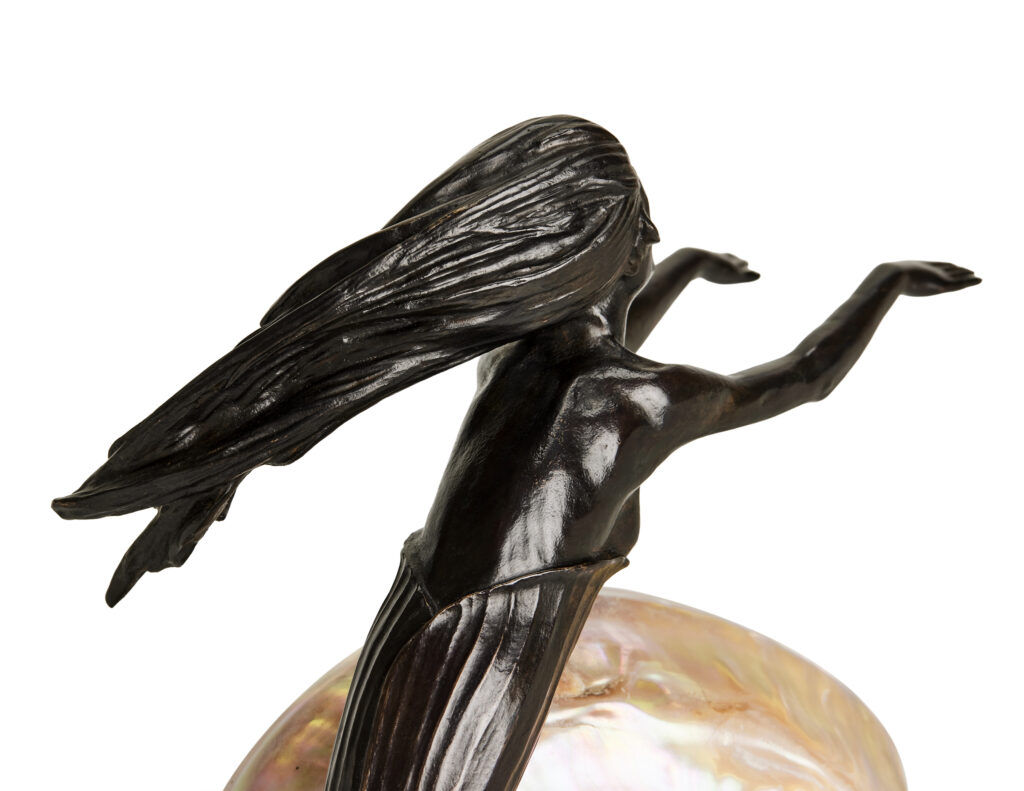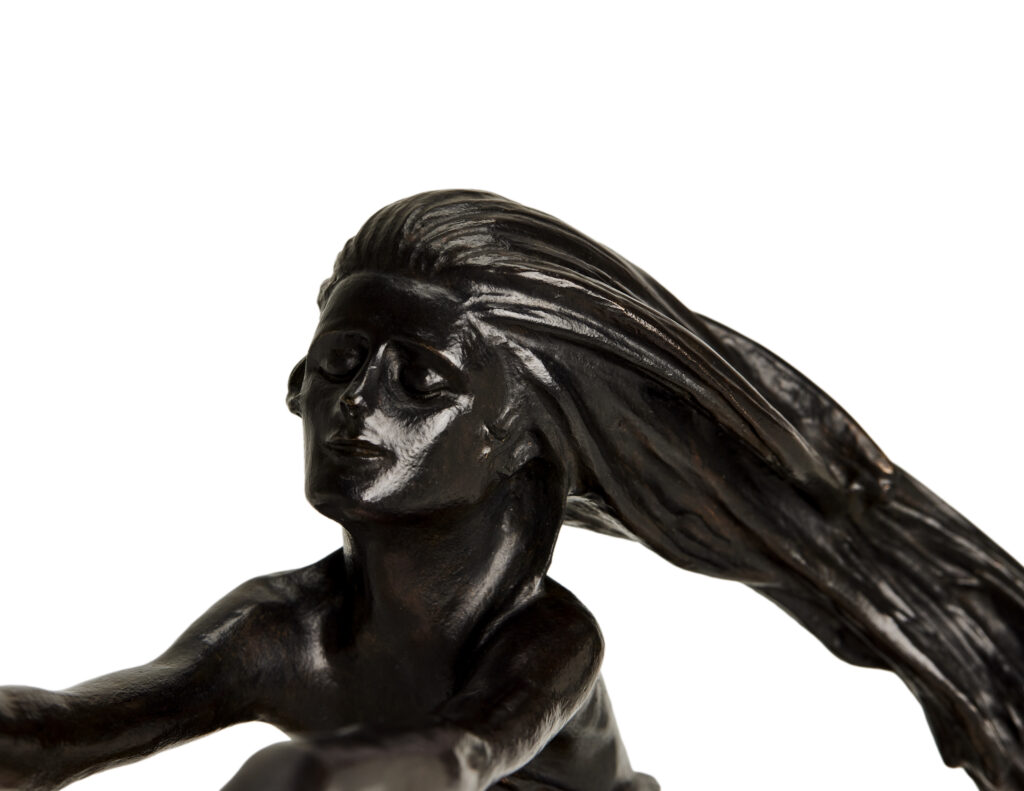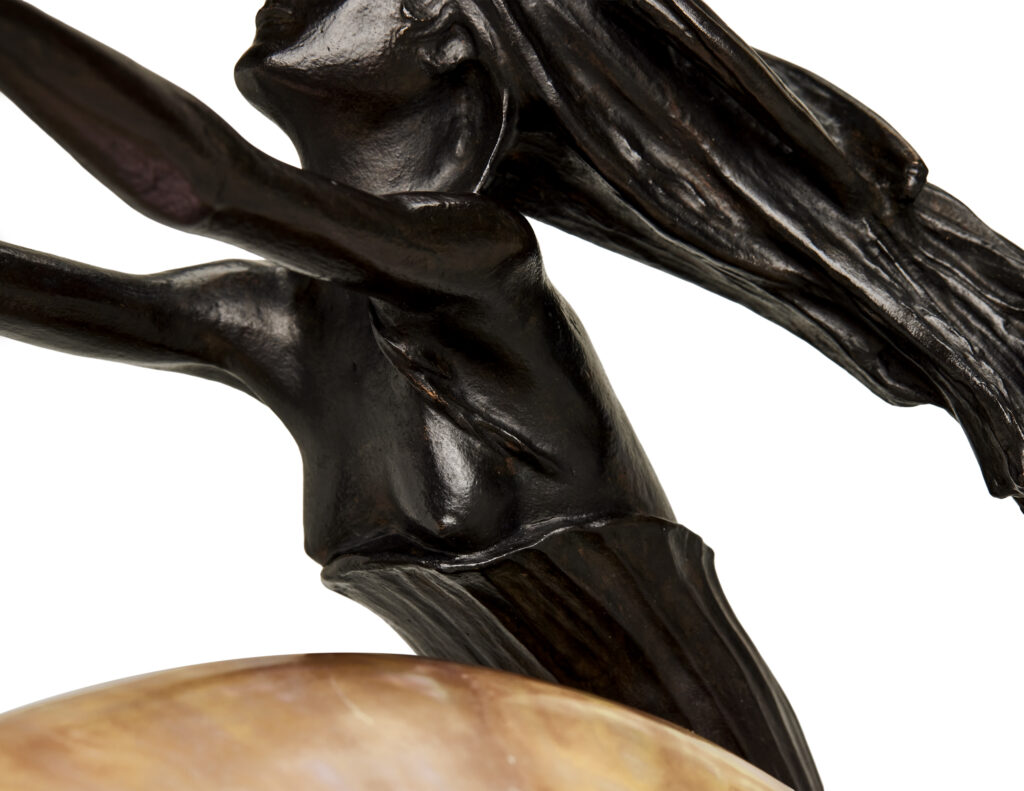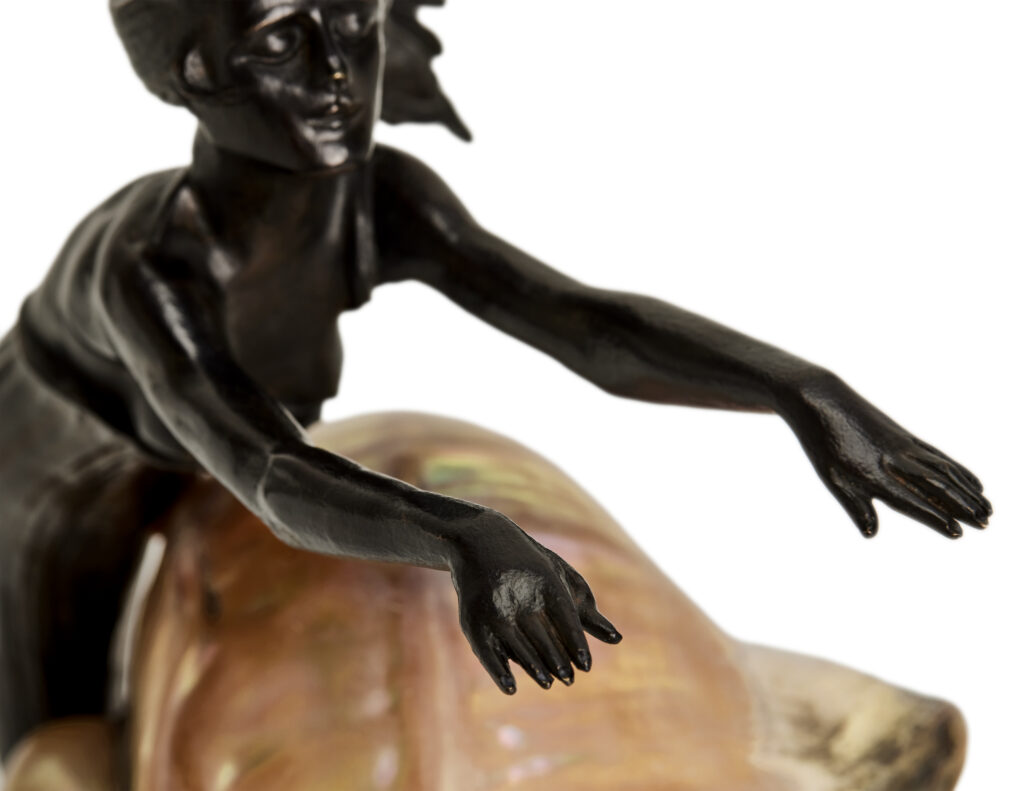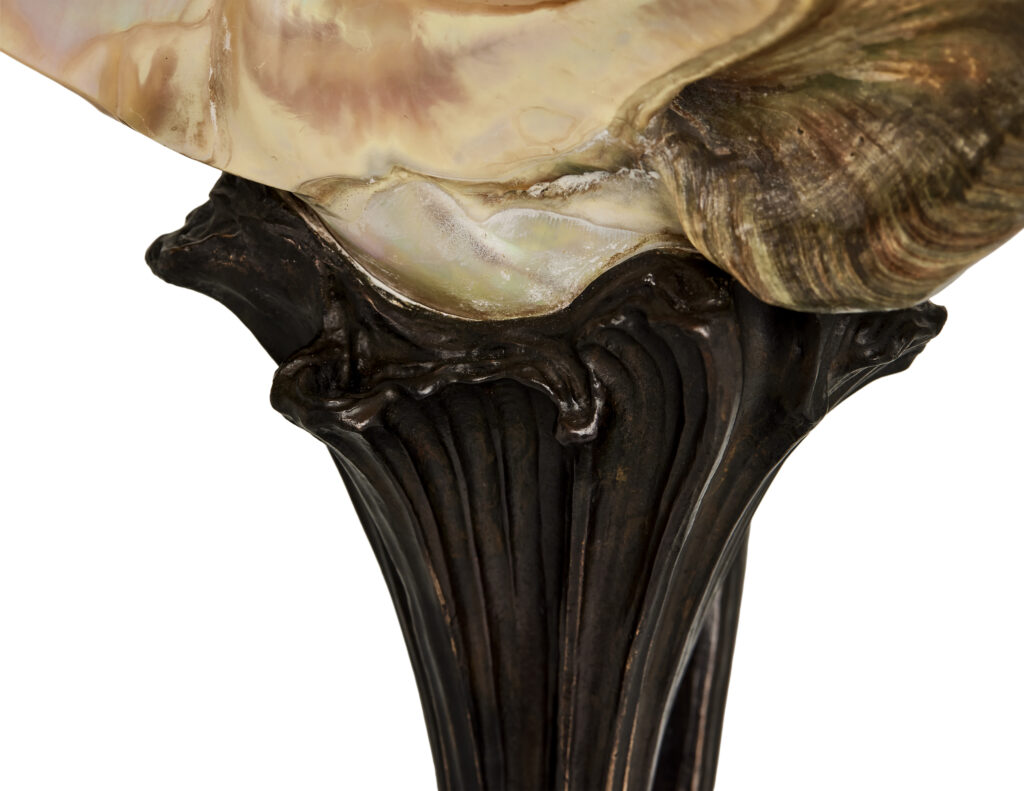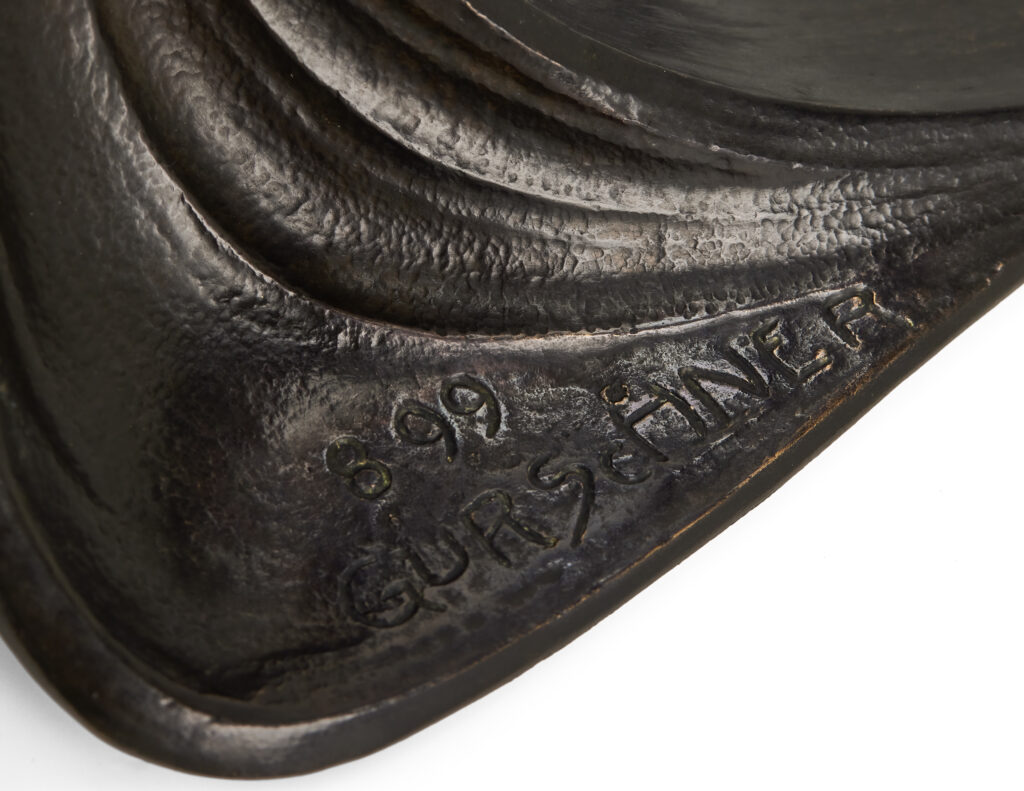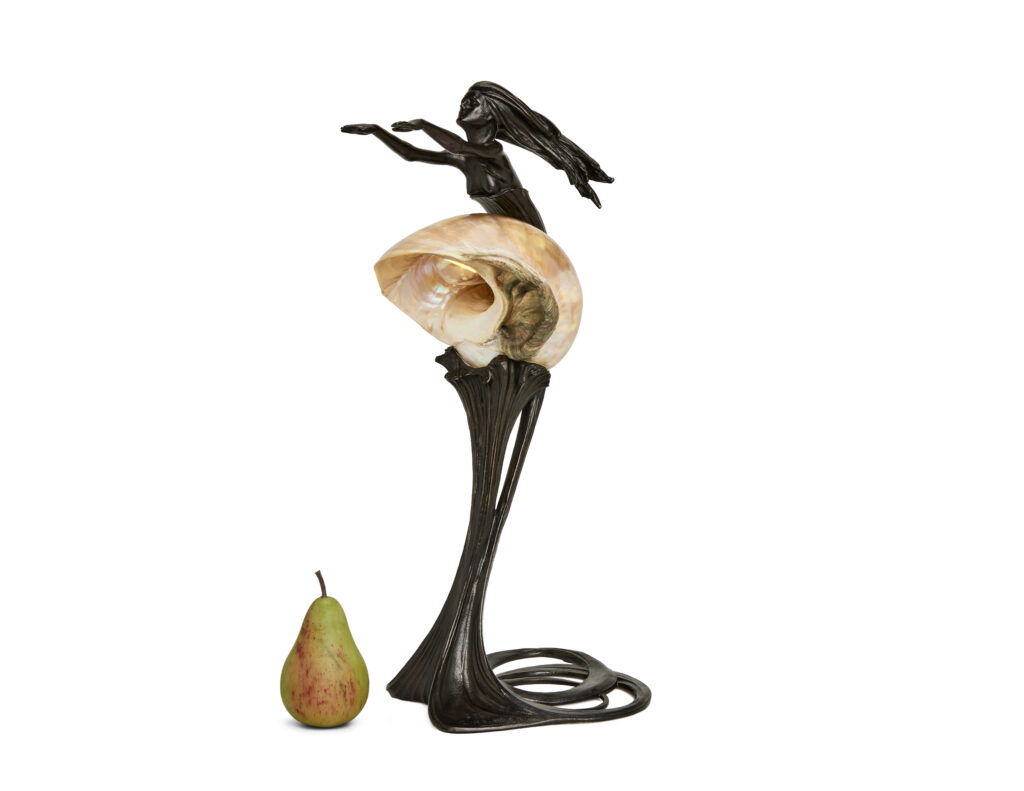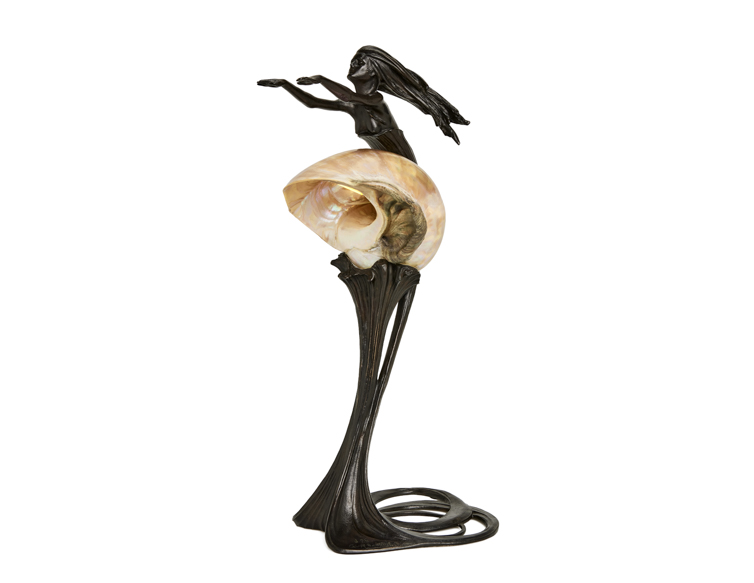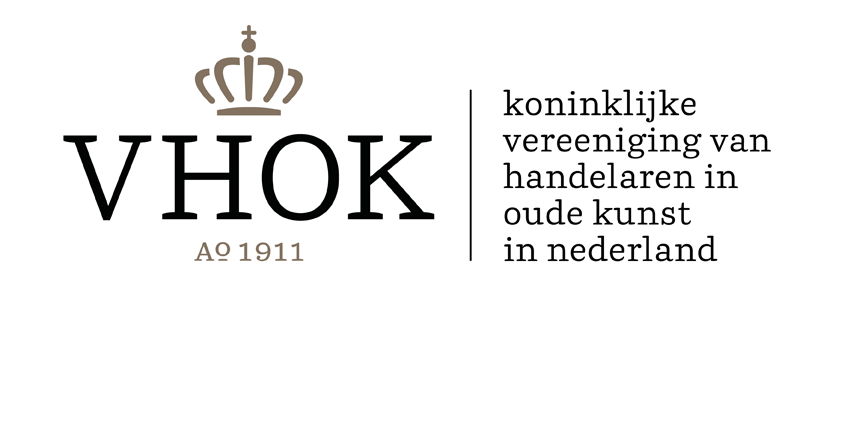This exceptional Art Nouveau lamp was designed in 1898 by the Viennese artist Gustav Gurschner (1873–1970), a key figure of the Wiener Secession. The lamp is crafted from patinated bronze and crowned with a natural Turbo marmoratus shell that serves as the lampshade. From the dynamically shaped base rises an elegant female figure, gracefully merging with the bronze and the shell in a fluid gesture that exudes both strength and refinement.
The design reflects Gurschner’s unique approach to applied art: a synthesis of sculpture, functional design, and symbolism. The use of an iridescent tropical shell as a light diffuser creates a warm glow and enhances the organic character of the piece — a hallmark of the Art Nouveau movement.
The lamp is signed with the model number “899” and “Gurschner”, and was published in the influential design journal Kunst und Handwerk in the year of its creation (1898, p. 46), establishing it as a progressive example of modern lighting design at the turn of the century.
A select number of similar lamps are now held in the prestigious Neess Collection at the Museum Wiesbaden, internationally renowned for its outstanding holdings of Jugendstil and Symbolist art. The presence of such lamps in a museum context underscores the importance and rarity of Gurschner’s early work.
gUSTAV gURSCHNER
Gustav Gurschner was an influential Austrian sculptor, medallist, and designer of applied arts active around 1900. As a co-founder of the Wiener Secession and a member of the Hagenbund, he played a central role in the development of Viennese decorative arts during the Jugendstil period.
After completing his studies at the Kunstgewerbeschule in Vienna, Gurschner spent time in Munich and Paris, where he was exposed to a range of international stylistic influences. From 1898 onwards, he settled permanently in Vienna, where he quickly gained recognition as a portrait sculptor and creator of refined medals and objects.
His work is characterised by an eclectic visual language, drawing inspiration from antiquity, symbolism, and orientalism. Particularly notable are his archaic-looking bronze objects with distinctive ornamentation — often created as lamps, vases, candlesticks, or utilitarian objects — which are now highly sought-after collector’s items within the Art Nouveau movement.
Works by Gurschner can be found in renowned collections, including the Museum Wiesbaden (Neess Collection).
Price: On request – Please click here to send us a message using the contact form.
